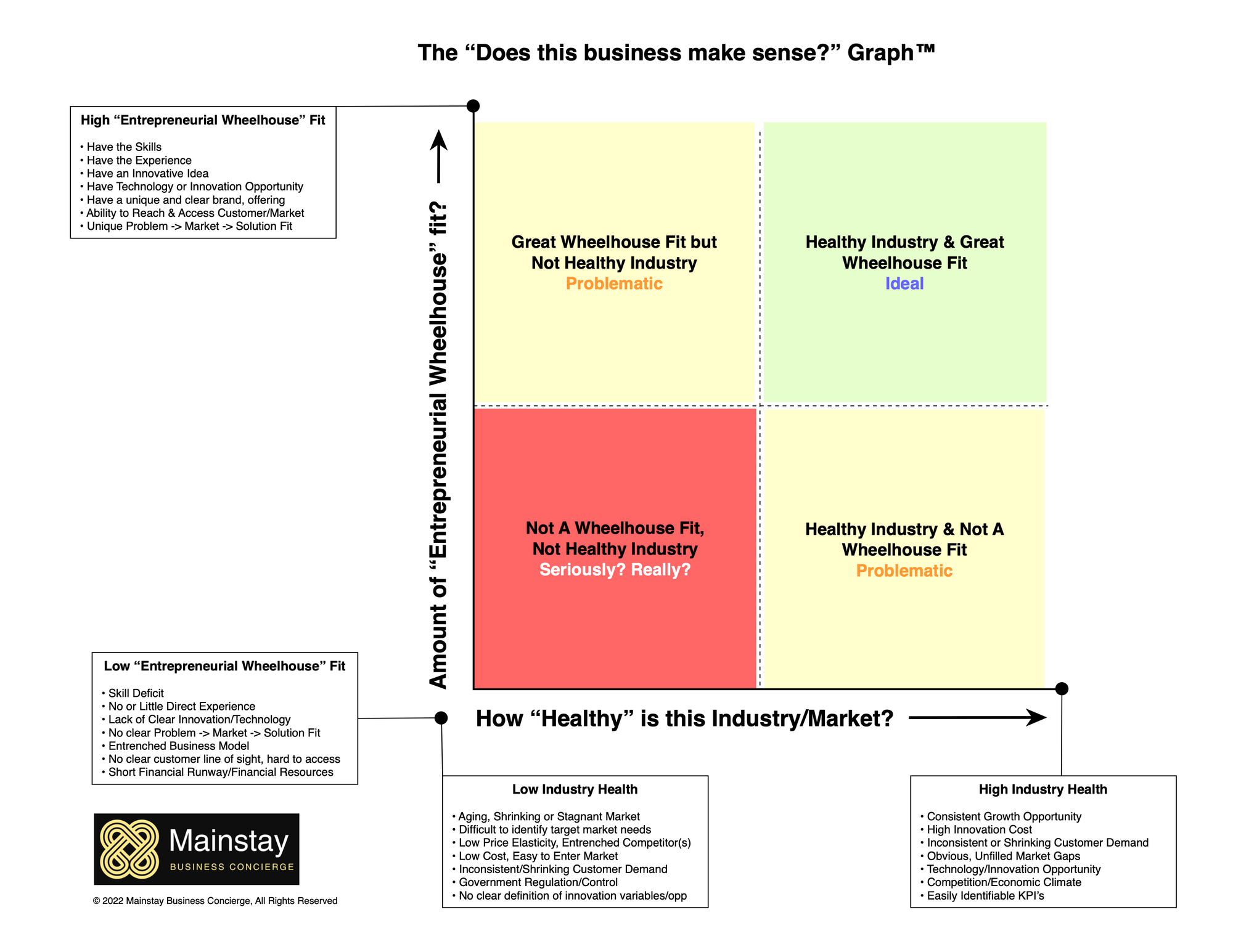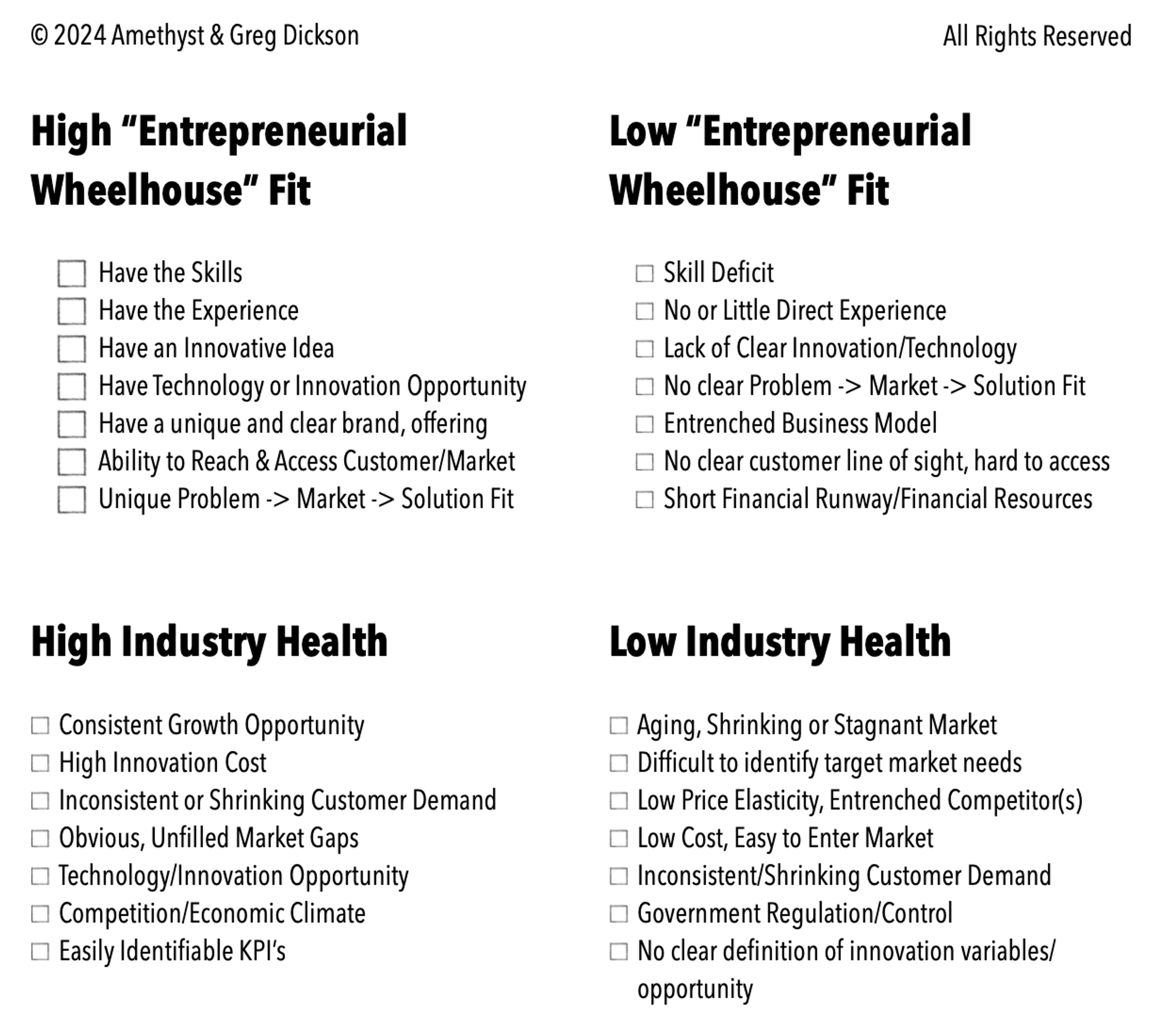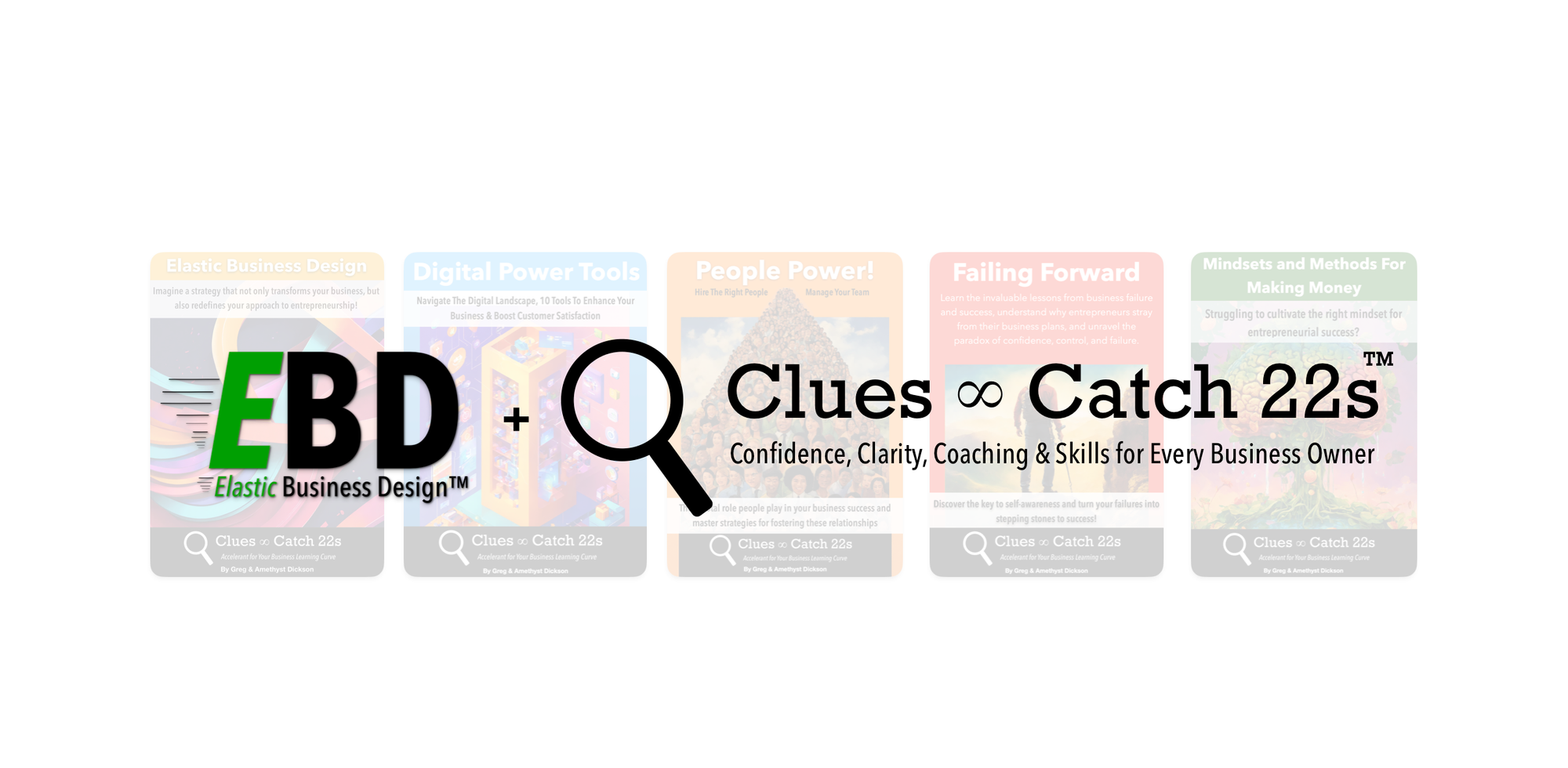In this section, we’ve made an assumption that you’ve come up with an idea for a business. based on your career experience.
Before you expend anymore time, effort and energy, it’s essential to do a quick evaluation of the viability of turning your career into a business.

Wheelhouse Fit Evaluation Form
To use the provided worksheet for self-assessment, follow these steps:
- High Entrepreneurial Wheelhouse Fit: List down your skills, experience, and innovative ideas. Assess if you can access your target market and if you have a unique problem-market-solution fit. Check if these aspects align with your business idea.
- High Industry Health: Research your chosen industry's health. Identify growth opportunities, innovation costs, customer demand, market gaps, competition, economic climate, and identifiable KPIs. Evaluate these factors and see how they influence your business idea's sustainability.
- Low Entrepreneurial Wheelhouse Fit: Identify potential challenges such as specific skill deficits, lack of direct experience, no clear innovation/technology, no clear problem-market-solution fit, entrenched business model, difficulty in accessing customers, and short financial resources. Reflect on how these might affect your business and plan on how to mitigate these risks.
- Low Industry Health: Evaluate potential industry challenges including an aging, shrinking or stagnant market, difficulty in identifying target market needs, low price elasticity, entrenched competitors, low-cost market entry, inconsistent or shrinking customer demand, government regulation or control, and unclear definition of innovation opportunities. Understanding these can help you evaluate if the industry is right for your business.
By going through these steps, you can gain a comprehensive understanding of your personal capacity and the industry/market environment, which are crucial to successfully transitioning from a career to a business.

Assessing Your Own Wheelhouse Fit
Once you have completed your review of our checklist, use these notes to dig a little deeper. This assessment is divided into four quadrants, follow these instructions for each quadrant:
High Entrepreneurial Wheelhouse Fit
Use this to assess if you have the necessary skills, experience, innovative ideas, technology or innovation opportunities. It also looks at your ability to reach and access your target market, and if you have a unique problem-market-solution fit. These factors are crucial in converting your career into a successful business.
- List down your skills, experience, and innovative ideas.
- Identify any technology or innovation opportunities within your reach.
- Assess your ability to reach and access your target market.
- Evaluate if you have a unique problem-market-solution fit.
High Industry Health
This examines the health of the industry you're entering. Factors such as consistent growth opportunity, innovation costs, customer demand, market gaps, competition, economic climate, and identifiable KPIs are considered. These elements can determine the sustainability of your business in the industry.
- Research your chosen industry to understand its health.
- Identify factors such as growth opportunities, innovation costs, customer demand, market gaps, competition, economic climate, and identifiable KPIs.
- Evaluate these factors to determine the sustainability of your business in the industry.
Low Entrepreneurial Wheelhouse Fit
This focuses on potential challenges such as skill deficits, lack of direct experience, lack of clear innovation or technology, no clear problem-market-solution fit, entrenched business models, difficulty in accessing customers, and short financial resources. Recognizing these potential hindrances can help you anticipate and mitigate risks.
- Identify any potential challenges such as skill deficits or lack of direct experience.
- Assess if you have a clear innovation or technology, and a clear problem-market-solution fit.
- Evaluate your business model to see if it is entrenched or flexible.
- Assess your ability to access customers and your financial resources.
Low Industry Health
This looks at potential industry challenges including an aging, shrinking or stagnant market, difficulty in identifying target market needs, low price elasticity, entrenched competitors, low-cost market entry, inconsistent or shrinking customer demand, government regulation or control, and unclear definition of innovation opportunities. Understanding these can help you evaluate if the industry is right for your business.
- Evaluate potential industry challenges including an aging, shrinking or stagnant market, and difficulty in identifying target market needs.
- Assess the price elasticity, competitors, cost of market entry, and customer demand.
- Review government regulations or controls that may affect your business.
- Identify if there are clear definitions of innovation opportunities.
Each of these four areas are important as they provide a comprehensive understanding of both your personal capacity and the industry/market environment, which are crucial to successfully transitioning from a career to a business.
Reflective Worksheet
- High Entrepreneurial Wheelhouse Fit: What are your key skills, experiences, and innovative ideas related to your business idea? How can you access your target market? Do you have a unique problem-market-solution fit?
- High Industry Health: What is the current health of your chosen industry? Are there growth opportunities, innovation costs, customer demand, market gaps, competition, economic climate, and identifiable KPIs that could influence your business idea's sustainability?
- Low Entrepreneurial Wheelhouse Fit: What are the potential challenges you might face such as specific skill deficits, lack of direct experience, no clear innovation/technology, no clear problem-market-solution fit, entrenched business model, difficulty in accessing customers, and short financial resources? How can you mitigate these risks?
- Low Industry Health: What are the potential industry challenges you might face including an aging, shrinking or stagnant market, difficulty in identifying target market needs, low price elasticity, entrenched competitors, low-cost market entry, inconsistent or shrinking customer demand, government regulation or control, and unclear definition of innovation opportunities? How can these influence your decision to move forward with your business idea?
- Gaps: How can you address any gaps in your entrepreneurial wheelhouse fit? Can you acquire new skills, partner with someone who has the skills you lack, or pivot your business idea to better align with your strengths and experience?
- Hidden Opportunities: If the health of your industry seems low, are there niche markets, innovations or trends that could offer opportunities for your business?
Evaluating Your Self-Assessment
In conclusion, carefully evaluating your entrepreneurial wheelhouse fit and the health of your intended industry is crucial for the success of your career-based business. It's essential to be honest with yourself when assessing your strengths, weaknesses, and the potential challenges and opportunities in your chosen industry.
If you find that your entrepreneurial wheelhouse fit is lacking in some areas, consider what steps you could take to address these gaps. Could you acquire new skills, partner with someone who has the skills you lack, or pivot your business idea to better align with your strengths and experience?
Similarly, if the health of your industry seems low, think about whether there might be niche markets, innovations or trends that could offer opportunities for your business. Keep in mind that this evaluation isn't a one-time task.
As you continue to grow and learn, and as the market evolves, revisit this evaluation to ensure your business remains viable and positioned for success.
